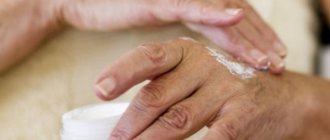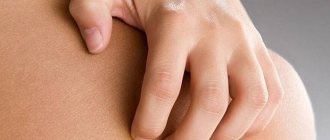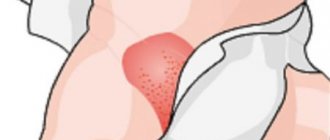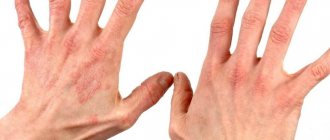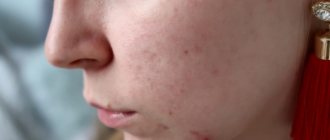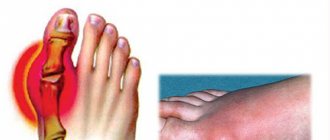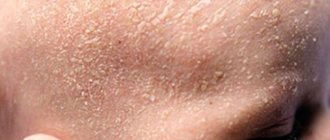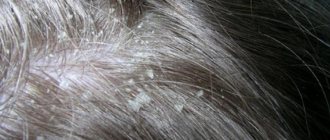Dühring's disease is a chronic skin pathology with frequent relapses, manifested as an itchy rash. The external symptoms of the disease resemble a rash due to herpetic pathology.
Dühring's dermatosis herpetiformis is characterized by a specific rash that forms on the skin in the form of a garland or ring. This type of disease manifests itself more often in males of working age.
Features of the disease
Dühring's dermatitis is characterized by the acute appearance of a rash on the skin. On a small area of the body, erisematous areas, papules, large and small blisters filled with liquid can simultaneously form. This rash is accompanied by burning and itching, and in some cases, an increase in body temperature.
Dühring's dermatosis herpetiformis most often develops in individuals between 15 and 60 years of age. Moreover, as practice shows, representatives of the stronger half of humanity are more susceptible to this disease. It is worth emphasizing that Dühring's disease is classified into types and forms depending on the age of the patient.
Localization areas
Rashes of bright red, often scarlet color are located on:
- lower back;
- shoulders;
- elbows;
- shoulder blades;
- buttocks;
- knees.
Sometimes papules, spots, blisters appear on other parts of the body. A characteristic sign is the absence of cases of rash on the feet and palms.
How to get rid of cellulite? Find out effective control methods in a separate article.
Read all about Vishnevsky's ointment for acne at this address.
Forms
Dermatitis herpetiformis has several types and forms. In determining what type of pathology it is, visual analysis of the skin rash plays an important role. The most common types are:
- vesicular. In this condition, small vesicle-type bubbles form on the skin;
- papular. This variety is characterized by the formation of multiple small nodules with no voids;
- bullous With this type of pathology, a large number of blisters filled with liquid contents are formed;
- urticariform. This type of pathology is characterized by the formation of multiple blisters due to detachment of the upper layer of the epithelium.
This is what Dühring's dermatitis on the hands may look like.
In the case of Dühring's dermatitis herpetiformis, in which the rash merges with each other and transforms into erosion, we can say that the defect has acquired an atypical form of dermatitis. Such negative transformations are also classified and among them the most common are:
- vegetative. With this complication, complicated foci of villous type are formed;
- localized. Symptoms are expressed only in a small area of the skin;
- pemphigoid. In this case, Dühring's dermatosis herpetiformis is characterized by a rash of large compacted blisters that are difficult to rupture;
- strophuloid. The formation of blisters and papules occurs. Moreover, nodules form first, and small blisters appear on top of them;
- trichophytoid. With such an exacerbation, the rash will have wavy edges and peel off. These symptoms are in many ways similar to fungal infections. For this reason, doctors give clinical recommendations to undergo a study in order to establish the root cause of the negative symptoms that appear;
- eczematoid. At the site of the lesion, multiple rashes of papules and blisters are observed, which literally transform into weeping erosions within a few days.
There is another form called senile dermatitis. As a rule, Dühring's senile dermatitis occurs against the background of age-related changes in the body, which cause metabolic disorders, problems in the liver, and inhibition of blood flow activity. With such a pathology, a rash of different sizes appears on the body, which forms an atypical form of the defect.
Dühring's disease in old age is dangerous due to its course. Therefore, at the first symptom, you should immediately consult a doctor for advice.
Etiology and pathogenesis
The etiology and pathogenesis are not clear; There are some reports about the viral nature of Dühring's disease, but the very diverse microorganisms discovered by different researchers are not undoubtedly specific for this pathology; animal experiments have not been definitively conclusive. Some researchers tend to consider D. b. as angiotrophoneurosis. Many authors emphasize the importance of the special sensitivity of patients to certain medicinal substances, for example, to potassium iodide, and therefore the so-called. Jadasson's test (use of 50% ointment with potassium iodide on lanolin). With D. b. eosinophilia was detected in the blood and in the blisters, an increase in the content of immunoglobulins in the blood serum; this served as the basis for the assumption of the immunoallergic nature of D. b., a cut supported by many authors. Endocrine disorders, especially thyroid function disorders, are also put forward as an etiological factor. Data on disturbances of salt and water metabolism turned out to be insufficient to explain the pathogenesis of D. b. There are reports in which D. b. is considered as para-oncological dermatosis (see).
Causes
Unfortunately, the reasons why dermatitis herpetiformis manifests itself are not yet fully understood. In some patients, when taking an anamnesis, a malignant neoplasm affecting organs is revealed.
In addition, Dühring's dermatosis often occurs in individuals:
- suffering from disorders of the normal functioning of the small intestine;
- with intolerance to gluten protein, which is found in large quantities in cereals.
This is what Dühring's dermatitis on the back may look like.
Also, some experts believe that Dühring's dermatitis herpetiformis is autoimmune in nature. This theory is supported by the fact that specific antibodies are more often found in the area bordering the dermis with the epidermis.
But as for the provocateurs that cause Dühring’s dermatitis herpetiformis, these include the following:
- frequent overload of the central nervous system;
- hormonal imbalances;
- gastrointestinal pathologies accompanied by frequent relapses;
- viral pathologies;
- poisoning with toxic substances;
- infection by parasites of the body.
In addition, a pathology such as Dühring's dermatosis can occur due to individual intolerance to iodine, genetic predisposition and allergies. It is worth noting that among representatives of the fair half of humanity, herpetic vesicular dermatitis often develops during pregnancy and menopause. This is due to the fact that during such periods the female hormonal balance is rearranged, as a result of which the disease manifests itself.
Symptoms
As mentioned above, dermatitis herpetiformis is characterized by an acute manifestation. The following symptoms may indicate that dermatitis has occurred:
- red spots form on the body;
- further, the spots turn into blisters;
- the negative process is accompanied by swelling;
- gradually the blisters form into blisters;
- the location of the bubbles resembles a ring or crescent;
- Severe itching and burning is felt in the areas of the rash.
Initially, the blisters contain clear liquid. Gradually, the color of the contents changes, the liquid becomes cloudy, which indicates the presence of infection. The blisters have a dense structure to the touch. However, over time, they open on their own and transform into ulcerative formations. Around each burst blister is its tire, which forms into a crust. It is this moment that indicates the healing of erosions.
Treatment
Unfortunately, it will not be possible to completely defeat Dühring's disease. This type of pathology is chronic and characterized by frequent relapses. However, the patient is able to control the course of the disease and prevent the condition from worsening.
You need to contact a specialist.
Treatment for Dühring's dermatosis consists of a whole drug complex. However, before you begin to eliminate the consequences, it is important to identify the root cause and determine its type. For these purposes, the following diagnostic measures are prescribed:
- biological fluid is collected for a general analysis to determine eosinophils;
- a cytological examination of the fluid taken from the bladder is performed;
- histology of a fragment of inflamed skin;
- Analysis of urine;
- thyroid check.
After these tests are performed, the patient is examined for the presence of malignancies and gastrointestinal defects. Since the pathology is chronic, the dermatovenerologist has the following goals:
- transfer the course of the pathology to a long stage of attenuation;
- relieve the patient from external manifestations of the disease and thereby improve his physical as well as moral condition;
- get rid of rashes and exclude infection;
- Familiarize the patient in more detail with preventive methods that allow you to control the course of the pathology.
In turn, the patient must strictly adhere to the following medical recommendations:
- exclude taking a bath and visiting a steam bath;
- when bruising in the shower, try not to use a washcloth in the affected areas;
- have a good rest;
- spend more time in the fresh air;
- avoid stressful situations;
- do not overwork yourself physically;
- take vitamin complexes.
In addition, diet is important for Dühring's disease. By eating properly, negative symptoms will go away as soon as possible.
As for therapy, it consists of the use of the following dosage forms:
- To relieve allergic symptoms, antihistamines are prescribed;
- Sedatives will help you get a good rest;
- in case of severe pathology, hormonal drugs are indicated;
- Diamond solution or fucorcin helps eliminate the effects on the skin.
A positive effect can also be obtained when treating consequences on the skin using medications from the sulfonic group. Traditional medicine helps overcome the consequences of dermatitis. However, the use of such drugs must be agreed with the attending physician so as not to aggravate the course of the disease.
Medications
Therapy is carried out under the guidance of a dermatologist. Mandatory activities:
- taking medications of the sulfone group: Dapsone, Diaphenylsulfone, Diucifon, Autosulfone. Course – 5–6 days, break 1–3 days, then treatment is repeated until signs of dermatitis disappear;
- Sometimes sulfone therapy is ineffective. The doctor prescribes corticosteroids - Dexamethasone, Prednisolone. Medium doses of potent drugs are recommended;
- Antihistamines relieve signs of allergies and reduce itching. Suprastin, Erius, Zyrtec, Claritin are effective;
- taking vitamins of various groups. Multicomponent vitamin complexes have a good effect.
Local remedies will help alleviate the patient’s condition and get rid of rashes.
The skin is treated:
- Fukortsin;
- aniline dyes;
- Dermatol ointment;
- brilliant green solution;
- anti-inflammatory sprays;
- corticosteroid ointments.
Recommended:
- baths with a weak solution of potassium permanganate;
- taking general strengthening agents: tinctures of aralia, echinacea, leuzea, eleutherococcus, ginseng. Remember - many tinctures are contraindicated for hypertensive patients.
Find out everything about Baziron AS as an effective acne remedy on our website.
About rubella measles in adults is written in this address.
If you go here you can read an interesting article about acne on the forehead.
Prevention
Unfortunately, it will not be possible to overcome the pathology in question. Because Duhring's syndrome is a chronic defect. However , by strictly adhering to medical prescriptions, you will be able to forget about this unpleasant illness for a long time. All you need to do is devote a little time to preventive measures:
- adhere to dietary nutrition;
- do not use medications containing iodine;
- maintaining hygiene;
- try not to get too cold;
- minimize fat intake;
- avoid stress;
- promptly treat all viral and fungal infections.
All these simple rules will improve a person’s quality of life and help prevent relapse.
Preventive measures for DD
Due to the unclear etiology of the disease, primary preventive measures have not been developed. Therefore, when we talk about preventive measures, we mean preventing or minimizing relapses. After all, the chronic form is usually accompanied by periodic exacerbations, which are unpredictable and can occur at any time throughout life. Prevention lies precisely in not provoking them, the main aspects of which include:
- Compliance with recommendations for gluten-free dietary nutrition (food containing iodine and certain types of grains is strictly prohibited).
- Regular examination by a dermatologist (registration at a dispensary).
- Maintaining personal hygiene will significantly reduce the likelihood of infection.
General preventive measures, of course, include a healthy lifestyle. After all, bad habits aggravate the physical condition of the body and have a destructive effect on the immune system, which can lead to another exacerbation of dermatosis herpetiformis.
